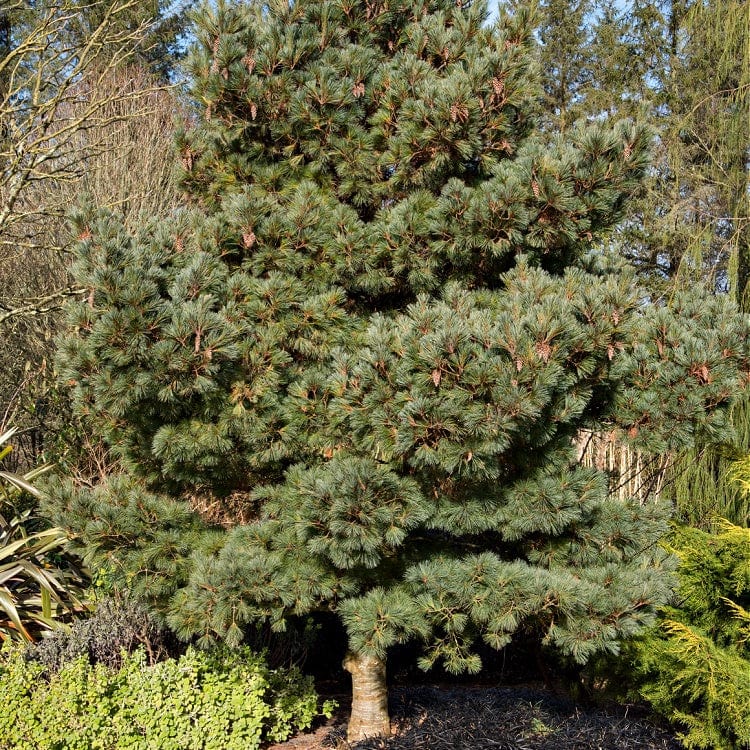White Pine Seedlings
Couldn't load pickup availability
We do not ship this plant to the following states:
.NC. MT. NE. NJ. SC. CT. AL. HI. ME. UT. WV. WI. TX. WI. VA. MS. MN. MI. KSShips 10-12 Days
.NC. MT. NE. NJ. SC. CT. AL. HI. ME. UT. WV. WI. TX. WI. VA. MS. MN. MI. KS
Pinus strobus - White Pine Seedlings
The timeless beauty of White Pine Seedlings enhances any landscape thanks to its elegant feathery needles and fast growth rate. Pinus strobus flourishes across different environments, making it an ideal choice for homeowners and conservationists. Throughout the year, the soft blue-green foliage of this tree offers continuous visual appeal while providing an exquisite background to surrounding plants and wildlife. Pinus strobus stands out among evergreens by growing in a naturally open form, which creates a graceful pattern that enriches gardens and reforestation landscapes with delicate textures.
This tree stands out because it supports diverse ecosystems by providing habitats and food sources. Numerous bird species and small mammals find shelter in it, and its seeds act as an important food source. Its rapid growth rate makes it vital for reforestation initiatives because it restores green spaces quickly and helps improve air quality. Once this species establishes itself with proper care, its maintenance needs become minimal, and it thrives effortlessly.
How to Successfully Grow White Pine Seedlings
Choosing the correct location plays a vital role in achieving healthy growth. The best environment for this tree includes well-draining soil with slight acidity. Although this tree can grow in various settings, preventing root problems requires avoiding compacted ground and overly moist areas. This tree develops robust branches and bright foliage when exposed to full sun. However, it shows adaptability to partial shade when required.
The initial years require regular watering, especially during periods with little rainfall. After establishment, its drought tolerance makes it a superior option for low-maintenance gardening. The base mulch keeps the soil moist and manages temperature to promote robust root growth. This plant's quick growth requires occasional pruning to eliminate lower branches and mold the canopy, but it still holds a naturally attractive shape.
Young plant growth requires protection from browsing deer because it attracts wildlife. An elementary protective barrier or repellent substance avoids harm to the tree throughout its growth period. Correct spacing between plants in a windbreak or privacy screen setup enables healthy airflow around the trees and prevents them from becoming overcrowded during their growth.
Why White Pine Seedlings Is a Smart Choice for Conservation
This species provides essential erosion control in regions requiring soil stabilization. Its robust root system helps the tree secure loose soil, reducing runoff and safeguarding watersheds. Restoration projects often depend on this tree because it can recover damaged landscapes while rebuilding native habitats for local wildlife.
White Pine Seedlings helps enhance air quality while delivering various environmental advantages. Its efficient absorption of carbon dioxide positions it as a great key to fighting climate change. Homeowners and environmentalists choose this tree for sustainable green spaces, whether they use it as a standout backyard feature or within extensive ecological restoration projects.
This Is How Your Plants Will Look upon Delivery
Shipping date depends on the date displayed and chosen when you order from the product's page.
We do not offer warranties on products after 5 days past receiving your plants.




